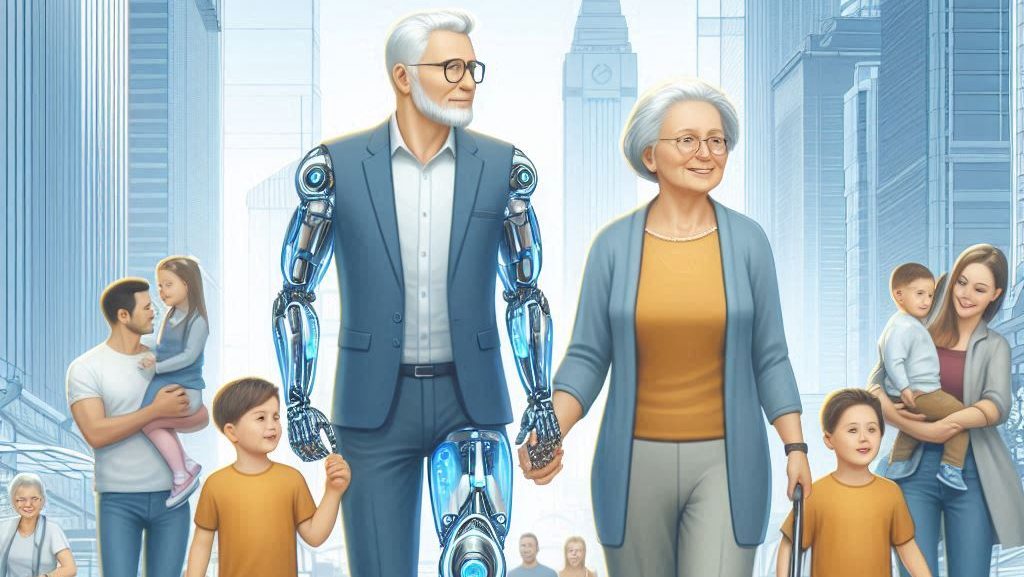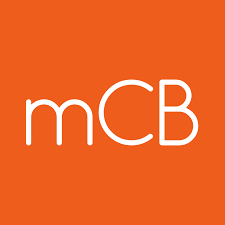
AI Scam-Fighting Grandmas and Robot Arms: The Wild Future of Senior Tech
- AI Scam Wars: Canadian seniors face doubled fraud cases, but AI “grandmothers” like Daisy now waste scammers’ time while digital literacy programs build protection skills.
- Life-Saving Senior Tech: Google’s Pixel Watch 3 detects cardiac arrest and calls 911, while robot arms catch falls and smart homes monitor health patterns automatically.
- Aging at Home: With 90% of seniors wanting to age in place, Canada’s investing millions in AI cameras, genetic medicine, and assistive technologies to keep older adults independent and safe.
Read Time: 10 minutes
Welcome to 2025’s senior technology revolution, where AI-powered grandmas wage war against scammers, robot arms catch falling seniors, and smartwatches can literally detect death. This is the wild future of senior tech, and it’s happening right now in Canada and around the world.
The numbers tell an amazing story. By 2037, 25% of Canadians will be over 65—up from just 18% today. That’s 10.4 million older adults, and here’s the best part: 90% want to age in their own homes for as long as possible.
This reality has sparked a technological gold rush. From Vancouver labs to Toronto startups, innovators are racing to create solutions that don’t just help seniors survive the digital age—they help them thrive in it.
But this revolution comes with a dark side. The same AI creating life-saving innovations is also being used by scammers targeting vulnerable seniors with increasingly clever attacks.
When Grandmas Fight Back: The AI Scam Wars
The fraud numbers are shocking. Fraud cases in Canada have almost doubled over the past decade, jumping from 79,000 in 2012 to 150,000 in 2022. Canadian seniors are prime targets, and the attacks are getting very sophisticated.
In Newfoundland last year. A grandmother got a call from someone claiming to be her grandson, arrested after a car accident and needing bail money. The voice was perfect—every laugh, every nervous habit, exactly like her grandson. She was about to wire $50,000 before a bank employee stopped her. It was an AI voice clone so good it fooled even family members.
Combined, Newfoundland seniors lost over $200,000 to these AI voice scams, and that’s just one province.
The problem is clear: while 75% of Canadian seniors now use the internet regularly, only 26% feel confident with computers and smartphones. This confidence gap creates perfect conditions for scammers with AI tools.
Meet “Daisy” – The Ultimate Scam Buster
But then something wonderful happened. In November 2024, British telecom company Virgin Media O2 unleashed a secret weapon against scammers: an AI-powered grandmother named Daisy.
Daisy is everything scammers expect from an elderly target—chatty, a bit confused about technology, and apparently very lonely. She loves talking about her cat Fluffy, her knitting projects, and her made-up grandchildren. What scammers don’t realize is that Daisy exists only to waste their time.
Daisy sounds completely human thanks to voice-to-text AI, response generation, and text-to-speech technology. She was trained by professional scam investigators and YouTube’s most famous scambaiter. When scammers call, Daisy springs into action.
After nearly an hour with Daisy, one frustrated scammer said: “It’s nearly been an hour! For the love of [bleep]!” Another complained that bothering people was her profession.
But Daisy just chuckles. While scammers are busy talking to her, they can’t scam real people. And she has all the time in the world.
The results are impressive: Daisy has handled over 1,000 scam calls, with conversations lasting up to 40 minutes. Every minute spent trying to scam an AI grandmother is a minute not spent targeting real victims.
Canadian Digital Warriors Rise Up
Inspired by innovations like Daisy, Canadians are fighting back with senior technology education and community support.
Connected Canadians, a national program, offers one-on-one support and digital workshops from coast to coast. Their volunteers work directly with seniors to make technology less mysterious and build confidence.
One of their most popular innovations? Simple guides and blog posts that translate tech jargon into plain language. Terms like “phishing,” “malware,” and “two-factor authentication” are explained in ways that make sense to people who remember rotary phones.
The results are encouraging. QR codes, once mysterious black squares, became favorites among participants. Google Maps revealed amazing capabilities beyond simple directions. Seniors who started classes uncertain about technology emerged confident enough to tackle whatever digital challenges came their way.
Robot Arms and Smart Hearts: The Assistive Tech Revolution
While Canadian seniors were learning to outsmart scammers, researchers across the country were developing technologies that sounded like science fiction—until they became real.
Canadian Innovation Leaders
The National Research Council’s Aging in Place Challenge represents the most ambitious aging technology program in Canadian history. Launched in 2021 with a seven-year plan, this multi-million-dollar program has one clear goal: develop technologies to help older Canadians stay in their homes by 2031.
The stakes are high. Between 11% and 22% of older adults who recently moved into nursing homes could have stayed at home with proper technological support. That represents thousands of Canadians who wanted to age in place but lacked the tools to do so safely.
At Carleton University in Ottawa, researchers are developing AI-equipped cameras that analyze walking patterns to predict health decline. The cameras create stick-figure representations rather than actual video, protecting privacy while providing crucial health insights.
Walking speed and pattern changes can reveal a lot about how someone is doing. This information could help doctors understand what’s happening in everyday life. The system includes sensors on doors that detect when seniors leave their homes—critical information for families caring for loved ones with dementia.
Innovation isn’t limited to Canada.
MIT’s E-BAR Robot – Elderly Bodily Assistance Robot works like robotic handlebars that follow users around, providing support when needed and literally catching falls with rapidly inflating airbags. Many seniors either underestimate fall risks and refuse bulky aids, or overestimate risks and avoid exercise. E-BAR offers invisible support that activates only when needed.

Image: Courtesy of the researchers
Georgia Tech’s Mind-Reading Exoskeleton – Intelligent upper-limb system uses deep learning to predict human intention with 96.2% accuracy. It uses soft sensors to monitor muscle activity in real-time, then provides powerful assistance when it detects intention to lift, reach, or grasp—reducing muscle effort by 3.7 times. Potential game-changer for seniors recovering from stroke, or dealing with age-related muscle weakness.
The most exciting developments in senior tech aren’t just helpful—they’re literally life-saving.
Google Pixel Watch 3: Loss of Pulse Detection
- Historic FDA approval – In March 2025, Google got approval for the first smartwatch that can detect when your heart stops beating and automatically call 911
- How it works – The Pixel Watch 3 uses AI and sensors to detect cardiac arrest, respiratory failure, overdose, or poisoning
- Emergency steps – No pulse detected? Watch vibrates and asks if you need help. No answer after 15 seconds? Loud alarm and 20-second countdown. Still no response? Calls 911 with your location
- Why timing matters – Every minute without help during cardiac arrest drops survival chances by 7-10%
UC Davis I-Care: The Family Connection System
- Like telepathy but real – I-Care system connects seniors with memory problems to distant family members using special sensors
- No cameras or microphones – Sensors collect information that only AI can understand, protecting privacy
- Daily help from afar – Tracks activities and health changes. Family members can help with daily tasks in real-time. Families worry less too
Genetic Medicine Goes Personal
- DNA-guided prescriptions – Genetic testing helps doctors pick the right medications for each senior
- Why it matters – Many seniors take multiple pills. This prevents dangerous mix-ups
- How it works – Simple DNA test shows which medicines work best and which to avoid
- Safer medication – No more guessing. Your genes tell doctors what’s safe for you
Here are two Canadian companies offering this service:
The Real-Time Protection Squad
While flashy innovations grab headlines, some of the most important work happens behind the scenes, protecting seniors from digital scams in real-time.
Google’s protection systems are everywhere now. Pixel phones use AI to listen to calls and spot fraud patterns like “send gift cards now!” When something suspicious happens, you get alerts through sound, vibration, and screen warnings. Chrome browser protects over one billion people from dangerous websites. Google Messages catches “conversational scams”—texts that start friendly but turn dangerous.
The best part? All this happens on your device. No personal information gets sent anywhere.
Banks are getting smart too. 90% now use AI to catch deepfakes, voice clones, and fake identities in real-time. With half of all fraud now using AI, only AI can fight back fast enough.
Smart Homes: Your Invisible Guardian Angel
Modern smart homes go way beyond voice assistants and programmable thermostats. Motion sensors can tell the difference between normal activity and emergencies. AI learns your daily routine and alerts family when something seems off.
These systems track sleep, medication timing, activity levels, and social time. When patterns change, caregivers get alerts before small problems become big ones. Voice assistants can even detect changes in speech that might signal health issues.
The best part? The goal isn’t surveillance—it’s keeping independence while staying safe. Smart processing protects your privacy while watching out for your wellbeing.
The Wild Future Ahead
The next wave of innovations promises technology that truly “disappears”—interfaces so natural and intuitive that using them feels like having a conversation rather than operating a machine. Every innovation must pass a crucial test: Does it enhance dignity while providing protection? The best solutions serve seniors without diminishing their independence or replacing human connections.
The transformation happening today represents more than technological advancement—it’s a fundamental shift in how we think about aging. Canadian seniors are moving from being vulnerable targets to empowered users, becoming the heroes of their own high-tech stories.
The future is here, and it’s wearing sensible shoes while carrying a smartphone that’s probably smarter than the rest of us.
Resources
Canadian Government Programs:
Community Organizations:
Global Innovations:
